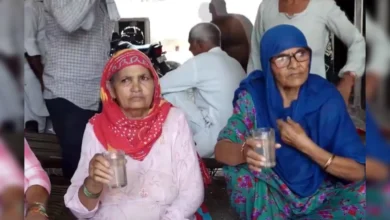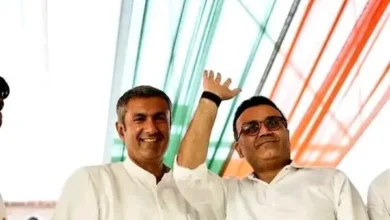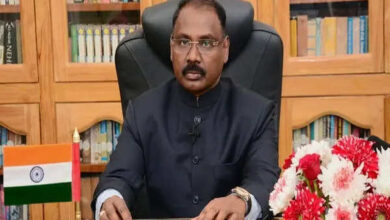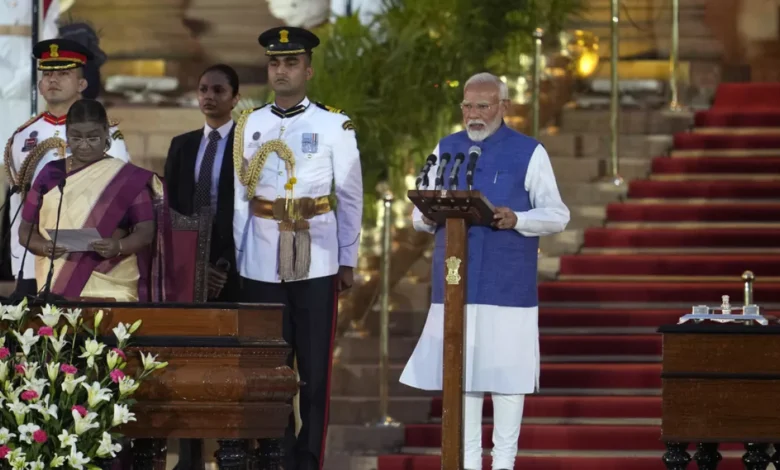
After all of the ups and downs, Prime Minister Narendra Damodardas Modi took the oath of office for the third time in Indian political history on June 9, marking the beginning of Modi 3.0.
After the first Prime Minister, Pt. Jawaharlal Nehru, he became the second Prime Minister to take the oath of office for the third time.
Prime Minister Narendra Modi took oath in the 18th General Election of India in 2024, having served as Prime Minister of India continuously since 2014. This list of Prime Ministers has remained unchanged since he took office as the 14th Prime Minister in 2014.
Even though Prime Minister Modi has won an additional five years in office, this is the first time he will share leadership following the BJP’s decisive defeat in the Lok Sabha election.
Complying with the principles of coalition dharma, the 72-member new Council of Ministers will include 11 ministers from NDA partners. There will be thirty Cabinet Ministers, five Ministers of State with Independent Charge, and thirty-six Ministers of State in the Modi 3.0 team. A subsequent announcement will be made on the portfolios.
Ten Scheduled Castes (SC), five Scheduled Tribes (ST), twenty-seven Other Backward Classes (OBC), and five minorities would be represented among the many socioeconomic groups represented in the Council of Ministers. Major ministries will be led by a record 18 senior ministers. The new Cabinet was likewise bereft of a few well-known personalities.
Modi’s cabinet consisted of Rajnath Singh, Amit Shah, Nitin Gadkari, Nirmala Sitharaman, S Jaishankar, and Piyush Goyal. In the previous Modi administration, each of these individuals had significant portfolios.
Jagat Prakash Nadda, the leader of the BJP, is now a minister as well. He is probably going to be assigned a key portfolio in the Modi 3.0 administration. His inclusion has sparked rumours that the BJP is about to elect a new president.
A number of previous chief ministers, including Jitan Ram Manjhi, Sarbanand Sonowal, HD Kumaraswamy, Manohar Lal Khattar, and Shivraj Singh Chouhan, were sworn in as ministers.
Numerous BJP allies were granted positions in the Cabinet. Cabinet ministers were HD Kumaraswamy, Jitan Ram Manjhi, Rajiv Ranjan Singh, also known as Lalan Singh, Kinjarapu Rammohan Naidu, and Chirag Paswan.
In order to surpass the majority threshold, the BJP, which only succeeded in securing 240 seats in the Lok Sabha, depends on its allies in the NDA, particularly N Chandrababu Naidu’s TDP and Nitish Kumar’s Janata Dal United. Several BJP allies were sworn in as MoS and MoS (independent charge), including Jayant Chaudhary of the RLD.
Among the first-time MPs in the Union Cabinet are actor-turned-politician Suresh Gopi, the first BJP MP from Kerala, and Harsh Malhotra, the winner of the Lok Sabha elections from East Delhi.
Except for minor states like Goa and Arunachal Pradesh, all states that send four or more MPs to the 543-member Lok Sabha have representation in the council of ministers, according to PTI.
In Modi’s cabinet of ministers, the largest number of leaders are from Bihar, Uttar Pradesh, and Maharashtra. Out of the total eight ministers from Bihar, four hold Cabinet status. Nine seats were awarded to Uttar Pradesh, one of which went to Rajnath Singh in the Cabinet. Maharashtra has six members of the council of ministers, and the state will hold assembly elections in October.
Seven of the 72 ministers are female. The Scheduled Tribe (ST), Scheduled Caste (SC), and Other Backward Class (OBC) groups collectively comprise at least 42 ministers.
The cabinet of ministers has dismissed 37 members of the previous Modi government. Smriti Irani, Anurag Thakur, Narayan Rane, and other seven ministers were members of the Cabinet. Several prominent individuals who were removed from their positions as ministers include Arjun Munda, Parshottam Rupala, Mahendra Nath Pandey, RK Singh, Kailash Choudhary, Sanjeev Kumar Balyan, Faggansingh Kulaste, VK Singh, Sadhvi Niranjan Jyoti, Rajeev Chandrasekhar, V Muraleedharan, and Meenakashi Lekhi.
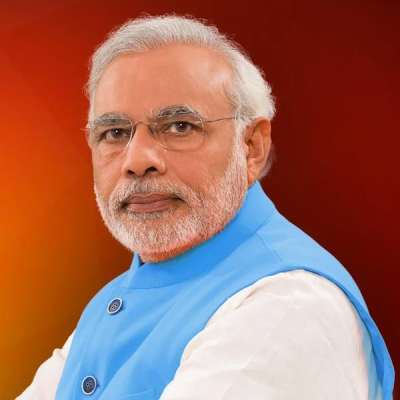
Rajnath Singh, Amit Shah, Nitin Jairam Gadkari, Jagat Prakash Nadda, Shivraj Singh Chouhan, Nirmala Sitharaman, Subrahmanyam Jaishankar, Manohar Lal, HD Kumaraswamy, Piyush Goyal, Dharmendra Pradhan, Jitan Ram Manjhi, Rajiv Ranjan Singh, also known as Lalan Singh, Sarbananda Sonowal, Virendra Kumar, Kinjarapu Rammohan Naidu, Pralhad Joshi, Jual Oram, Giriraj Singh, Ashwini Vaishnaw, Jyotiraditya M. Scindia, Bhupender Yadav, Gajendra Singh Shekhawat, Annpurna Devi, Kiren Rijiju, Hardeep Singh Puri, Mansukh Mandaviya, G Kishan Reddy, Chirag Paswan, and C R Patil are the members of the Cabinet.
The following individuals were also sworn in as Ministers of State (Independent Charge): Jayant Chaudhary, Jitendra Singh, Arjun Ram Meghwal, Jadhav Prataprao Ganpatrao, and Rao Inderjit Singh.
The new minister of states includes Jitin Prasada, Shripad Yesso Naik, Pankaj Chaudhary, Krishan Pal, Ramdas Athawale, Ram Nath Thakur, Nityanand Rai, Anupriya Patel, V. Somanna, Chandra Sekhar Pemmasani, SP Singh Baghel, Sushri Sobha Karandlaje, Kirtivardhan Singh, BL Verma, Shantanu Thakur, Suresh Gopi, L Murugan, Ajay Tamta, Bandi Sanjay Kumar, Kamlesh Paswan, Bhagirath Choudhary, Satish Chandra Dubey, Sanjay Seth, Ravneet Singh, Durgadas Uikey, Sukanta Majumdar, Savitri Thakur, Tokhan Sahu, Raj Bhushan Choudhary, Bhupathi Raju. George Kurian, Pabitra Margherita, Murlidhar Mohol, Nimuben Jayantibhai Bambhaniya, Harsh Malhotra, and Srinivasa Varma.
Prime Minister Narendra Modi met with the leaders of neighbouring nations who had come to the great swearing-in event in the nation’s capital just hours after taking office, and he said that India would keep pushing for the region’s peace, development, and prosperity.
PM Modi went on to say that India would keep raising the Global South’s profile internationally.
Modi 3.0 Inauguration Attended by Neighboring Leaders
PM Modi’s swearing-in event was attended by leaders of several of India’s neighbours, including President Mohamed Muizzu of the Maldives, Prime Minister Pushpa Kamal Dahal ‘Prachanda’ of Nepal, and President Ranil Wickremesinghe of Sri Lanka.
According to the Ministry of External Affairs, PM Modi met with the visiting leaders at Rashtrapati Bhavan following the ceremony.
Prime Minister’s Commitment to Regional Cooperation
The ministry also stated that PM Modi expressed gratitude to them for coming and reiterated India’s commitment to the “Neighbourhood First” policy and the “SAGAR Vision.”
In the statement, the ministry added that Prime Minister Modi assured the leaders that India would keep collaborating closely with these nations to promote regional peace, development, and prosperity during his third term. Additionally, he advocated for improving connectedness and interpersonal interactions inside the area.
“The prime minister emphasised that in his third term, India will continue to work for the peace, progress and prosperity of the region in close partnership with the countries even as it pursues its goal of Vikshit Bharat by 2047, In this context, he called for deeper people-to-people ties and connectivity in the region. He further added that India would continue to amplify the voice of the Global South in the international arena,” the MEA said in the statement.
After the event, PM Modi thanked the leaders on X.
“I am grateful to all the foreign dignitaries who joined the swearing-in ceremony. India will always work closely with our valued partners in pursuit of human progress,” he wrote.
Mohamed Muizzu, the president of the Maldives, was making his first trip to India after taking office on the island nation’s islands last year. The politician, who was well-known for favouring China, caused tension in the nation’s relations with India when he called for the departure of Indian military personnel from the country.
Modi was sworn in in 2014 and his inauguration in 2019 were attended by the leaders of the Bay of Bengal Initiative for Multi-Sectoral Technical and Economic Cooperation (Bimstec), Mauritius, and Kyrgyzstan. The leaders of the eight member states of the South Asian Association for Regional Cooperation (Saarc) were also invited.
This is the first time Hasina is representing Bangladesh, despite the fact that the country has the unique distinction of having been invited to all three swearing-in ceremonies. In 2014, Dhaka was represented by the speaker of the parliament while she was on a prearranged visit to Japan, and in 2019, former president Abdul Hamid attended the event while on a three-nation tour.
According to the sources, the first meeting of the third Narendra Modi cabinet is scheduled for Monday night at the Prime Minister’s home on Lok Kalyan Marg.
At 5:00 p.m., the recently appointed ministers would convene at Modi’s home.
According to the reports, BJP president J P Nadda also gave a dinner for individuals appointed to the council of ministers in the new Modi government.
Businessmen Gautam Adani and Mukesh Ambani, together with Bollywood stars Shahrukh Khan, Anil Kapoor, Anupam Kher, Kangana Ranaut, Vikrant Massey, Raveena Tandon,and Rajinikanth, attended the swearing-in ceremony on Sunday for Prime Minister Narendra Modi and his cabinet.
Prominent businessmen Gautam Adani, accompanied by his brother Rajesh Adani and wife Priti, as well as Mukesh Ambani and his sons Anant and Akash, as well as son-in-law Anand Piramal, were present.
Chief Justice DY Chandrachud was also there with his spouse. Former presidents Ram Nath Kovind and Pratibha Patil were also in attendance.
You might also be interested in – BJP suffers losses in majority of seats where PM Modi campaigned in Bengal
